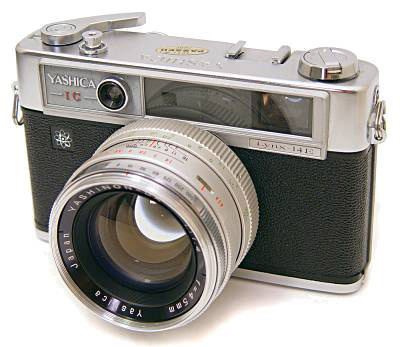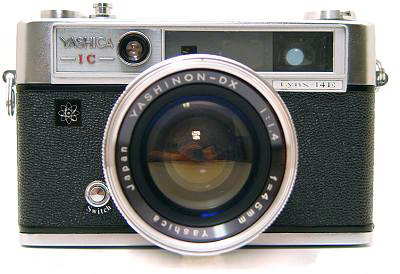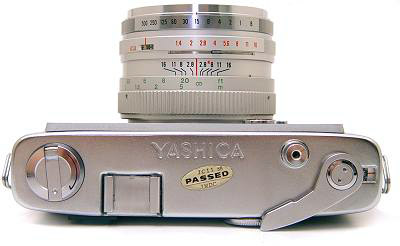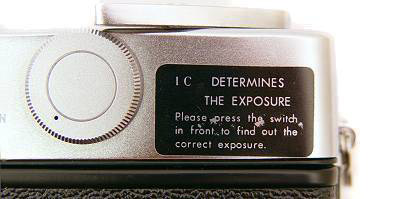|
On his website, the Yashica Guy writes that the Lynx 1.4 is so bulky that it appears to be a 120 roll film rangefinder. I don't really share this point of view - actually the body of the Lynx 1.4 has identical outer dimensions as the highly popular Electro 35 models (they fit into the same ever-ready case) and its weight is a mere 100g more. On the other hand, what you get with the Lynx 1.4 is a perfect available-light camera. Firstly, of course, it has a very fast lens. As far as I know, there is no other fixed-lens rangefinder with a f/1.4 lens available. Then there is the in-lens Seiko shutter - it operates by rotation of five very light blades and hence puts no momentum on the camera body when it fires (which is in contrast to focal plane shutters as e.g. used in the Leica M camera). The camera possesses a certain weight which effectively supresses shake, and finally, with the rangefinder focusing in low-light situations can be done very accurately (in contrast e.g. to SLRs). Two versions of the Lynx 1.4 were built, the Lynx 1.4 and the 1.4 E. The latter uses an IC for metering. Other differences are
There are other Lynx models such as the Lynx 1000, offering shutter speeds up to 1/1000 sec but a slower f/1.8 lens etc.- have a look at the Yashica Guy website. The outer appearance of the Lynx 1.4 is dominated by the enormous f/1.4 45 mm lens. This seven-element glass (five groups) is known to be among the best lenses ever installed on a fixed-lens rangefinder. It is indeed outstandingly sharp and contrasty, and people say that its performance compares to that of the Leitz Summilux 50 mm. Due to the copal in-lens shutter and the mass of the camera, exposure times down to a 1/15 sec can safely be managed without a tripod. Hence, with a 400 ASA film you can hardly imagine a light situation in which a flash would be required. The basis of the distance meter is 44mm. With the viewfinder magnification of about 0.7, the effective basis amounts to about 31mm, which is a lot more than what you get with other fixed-lens rangefinders. You need this wide basis, of course, when shooting wide open at f/1.4, but additionally it makes focusing very comfortable. The great advantage of the Lynx 1.4E over the Yashica Electro models is that it has a fully mechanical shutter. The batteries are only needed for the light meter. The latter is positioned on the camera body left to the viewfinder window. The Lynx has no automatic mode. It is operated manually, and the user is guided by under/over arrow marks showing the light-meter results in the viewfinder window. This is essentially identical to the procedure for the Leica M6. The meter is not activated via the shutter release but with a button on the front of the camera labelled "switch". This reminds strongly of the front-side exposure button of Contax SLRs and after getting used to it, it works very well. My Lynx 1.4 is in as-new condition. It was sold by a collector who obviously did not use it. Even though the camera has spent its former life on a shelf, the shutter was not sticky - everything worked perfect. Altogheter a unique and verrrrrry nice camera. |
|






